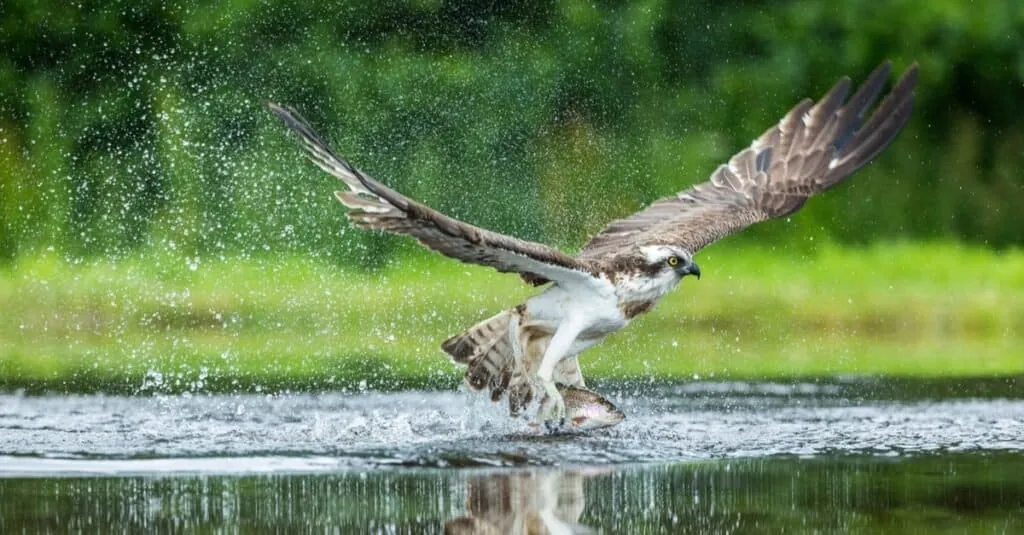Uncover Maryland’s Largest Island (And the Creatures that Inhabit It)
Maryland, despite being one of the smallest states in the US, has a lot to offer. As the saying goes, “Good things come in small packages,” and this certainly applies to the 8th smallest state in the country. In this article, we’ll focus on the largest island in Maryland, which is brimming with history and fascinating ecology. Join us as we delve into the many wonders this place has to offer.
How Many Islands Are There in Maryland?
Maryland boasts a total of 281 named islands, making it home to a small but significant fraction of the 18,617 named isles in the United States – the fifth highest number of islands in a single nation. In order to highlight some of the most notable islands in Maryland, we have compiled a table for your convenience.
| Island Name | Size | Significant Feature |
|---|---|---|
| Assateague Island | 24 square miles | Famous for herds of feral horses descended from shipwrecked Spanish horses. |
| Deal Island | 5.4 square miles | Holds a festival that features skipjack races. |
| Janes Island | 4.9 square miles | Janes Island State Park |
| Smith Island | 15 square miles | The last inhabited Maryland isle that is not vehicle-accessible. A collection of 3 distinct and closely packed isles – Tylerton, Rhodes Point, and Ewell. |
| Solomons Island | 2.3 square miles | Originally used as a tobacco port. |
What is the Largest Island in Maryland?
Maryland’s largest island is Kent Island, which spans over 31.6 square miles of space and is home to a population of 19,503 as of 2021. With a population density of approximately 626 people per square mile, the island is connected to Maryland’s mainland via the Chesapeake Bay Bridge, enabling vehicle transportation.
Where is Kent Island on a Map?
To give you a clearer understanding of Kent Island’s whereabouts, we’ve provided an interactive map. As you can see, the island is situated in the waters between the eastern and western sections of Maryland.
Kent’s Early History
Maryland’s history is incomplete without mentioning Kent Island, which has been witness to 12,000 years of Indigenous history. The Matapeake Tribe, belonging to the Algonquin nation, was among the several tribes that inhabited the island, known as “Monoponson” at that time. The tribe primarily existed as hunter-gatherers, but they also indulged in farming. Although the Matapeake were a peaceful tribe, they had occasional skirmishes with Susquehannock raiders. Sadly, when Europeans arrived on the island, they brought war and disease, and took ownership of the lands used by the Matapeake for gardening. The tribe slowly retreated from the island to avoid conflicts, but it was in vain, and they are now extinct.
European Settlement
European settlement on Kent Island began with the arrival of Captain John Smith and his crew. However, it wasn’t until later that the island was actually settled. In 1631, William Claiborne established the first permanent European settlement on Kent Island. Prior to this, he had spent four years exploring the Chesapeake Bay, seeking opportunities for trade with the remaining native peoples in the region, particularly the Susquehannock. Claiborne believed that Kent Island was an ideal location for his trading operations, so he purchased the island from the Susquehannock to make his vision a reality.
In the early days, Claiborne had a limited base of operations which comprised of a handful of men, a trading post, and a fort called Fort Kent. However, this small settlement gradually expanded and by 1634, it had added a few more buildings including a grist mill, a courthouse, and some private residences. Within the next four years, the settlement grew in size and had a population of around 120 men, along with an unknown number of women and children.
During this time, there was a fierce battle for the ownership of Kent Island as both parties claimed their rights over it. The Calvert family had been granted a charter by King Charles I to establish a colony in Maryland in 1632, which triggered a dispute over the fate of Kent Island. The Calvert family saw the current population and trading post as a lucrative opportunity and claimed it was part of their charter. On the other hand, Claiborne argued that Kent Island was excluded from the charter since it was a part of Virginia. This disagreement resulted in naval battles, which ultimately led to the Calvert family seizing the island from Claiborne’s grasp in 1638. As a result, Claiborne was forced to return to Virginia with his family, while Kent Island became a part of Maryland’s colony.
Kent Island’s Economy
Kent Island’s economy has transformed over time, adapting to changes in population and resources. Originally, the economy was based solely on trading. However, as Europeans settled in Kent, the economy shifted towards agricultural exports, primarily tobacco. By the 19th century, soil depletion brought an end to the tobacco industry and the economy pivoted towards seafood. The Kent Narrows became the hub of the thriving seafood industry in the region. Today, seafood and recreation continue to drive Kent Island’s economy. Although many seafood processing plants have relocated, fishing remains a significant part of the economy and culture. The island is home to several seafood restaurants, which attract both locals and visitors.
In the upcoming section, we will delve into the reasons why people are drawn to this region, including the delectable seafood, opportunities for wildlife observation, and the chance to immerse oneself in nature.
Things to Do on Kent Island
Let’s categorize the recreational activities on Kent Island to make it easier for you to plan your visit. The island offers a plethora of exciting things to do, including parks to explore, fishing spots to enjoy, refreshing swimming holes, fantastic shopping destinations, and delightful dining experiences.
Parks
-
- Sandy Point State Park features several beautiful beaches, along with boat launches and fishing opportunities. People love the park for its picnic tables situated over scenic views of the Chesapeake Bay. The park also provides boat rentals, food and beverage options, and a marina store.
- Terrapin Nature Park offers beautiful walking trails and beaches. The trails lead visitors through wetlands, wildflower meadows, woodlands, and tidal ponds. Wander the sandy beaches or spend time watching wildlife on the park’s 276 acres of preserved land.
Fishing
-
- The Romancoke Pier is a great local fishing spot.
- Prime Time Fishing Charter is one of many fishing charter businesses in the area that helps connect fishermen with unique fishing opportunities in the waters surrounding Kent Island.
- Matapeake State Park is rich with fishing opportunities.
Beaches
If you’re looking to visit or go swimming at the beach, the area has several options to choose from. While we’ve already highlighted a few spots, it’s worth mentioning that Terrapin Nature Park and Matapeake State Park both offer beautiful beaches. Additionally, Ferry Point Park Beach is another great option with refreshing waters.
Food
If you’re a seafood lover, you’ll be spoiled for choice when it comes to dining options on the island. Harris Crab House and Seafood Restaurant is a prime spot, with a comprehensive seafood menu to choose from. Other restaurants in the area also offer delectable dishes, such as Dock House Restaurant, Frix’s Fire Grill, and Libby’s Coastal Kitchen. There’s truly no shortage of delicious food to be had on the island.
Wildlife on Kent Island
Kent Island is home to a diverse range of wildlife, thanks to its unique relationship with the marine life that surrounds it. Coastal birds like osprey, great blue herons, and snow egrets can be spotted here. Interestingly, the waters surrounding Kent Island are inhabited by horseshoe crabs – strange, alien creatures that have been around since before the time of dinosaurs. In addition to these fascinating creatures, Kent Island is also home to painted turtles, black vultures, and white-tail deer.
When visiting the area, it’s crucial to keep in mind that human life is expanding, while the space available for wildlife is decreasing. It’s important to be mindful of nature and tread lightly while exploring the parks and preserves. By doing so, we can guarantee that the local wildlife has a fair chance to not only survive but thrive in their natural habitat.
Read More:







